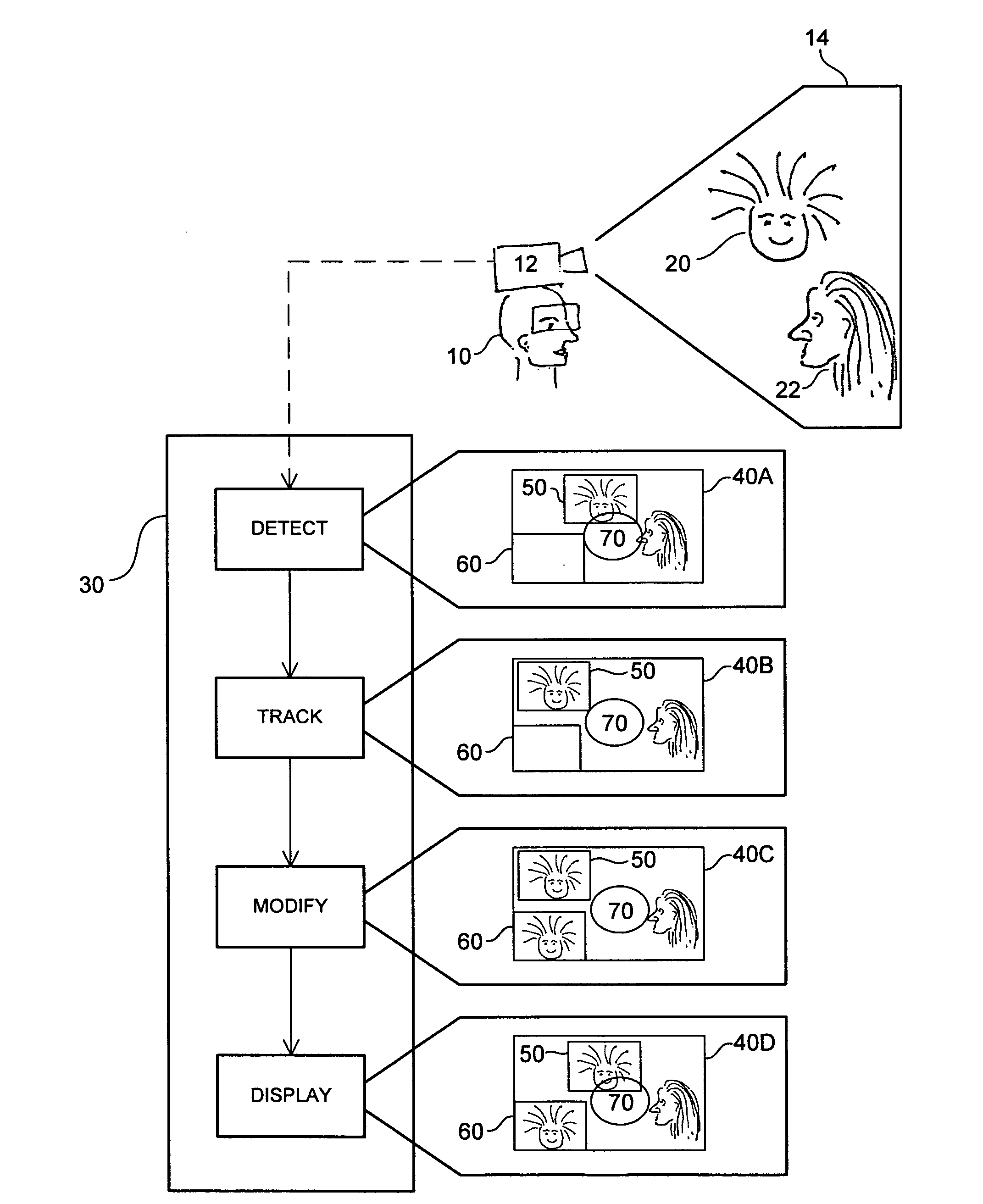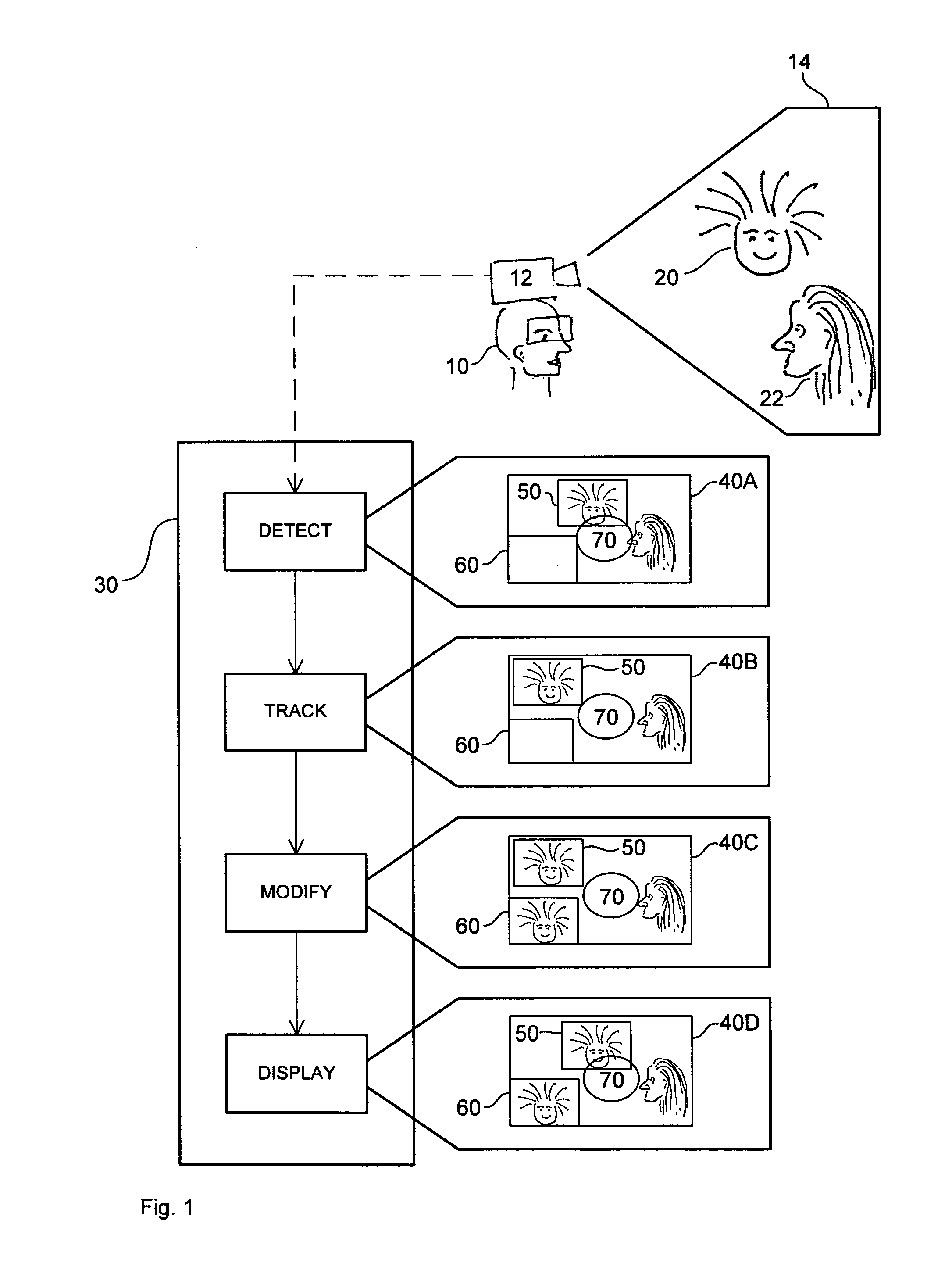Object Tracking for Artificial Vision
a technology of artificial vision and object tracking, applied in the field of object tracking for artificial vision, can solve the problems of blind spot in the centre of the field and leave the peripheral vision inta
- Summary
- Abstract
- Description
- Claims
- Application Information
AI Technical Summary
Benefits of technology
Problems solved by technology
Method used
Image
Examples
Embodiment Construction
[0020]The visually impaired user 10 wears an inconspicuous high resolution camera 12 and a pair of vision spectacles that provide a stereoscopic image of the scene 14 in front of the camera. Since the camera is worn by the user their movements cause the scene in front of the camera to change. In the scene shown there are two other people 20 and 22; friends of the user. As the three converse the user may move their head to face each of the friends 20 and 22 as they talk. Each of the three may also move around in the scene as they wish.
[0021]The camera 12 records the scene in front of it, and a processor 30 in the camera processes the recorded video data in real time. In FIG. 1 a single monoscopic image is shown being processed at four different instances of time, 40A, 40B, 40C and 40D.
[0022]The first thing the processor 30 does is to detect the face of user 20; at time 40A. Face detection algorithms work in different ways and this one uses a pre-trained model using statistical machin...
PUM
 Login to View More
Login to View More Abstract
Description
Claims
Application Information
 Login to View More
Login to View More - R&D
- Intellectual Property
- Life Sciences
- Materials
- Tech Scout
- Unparalleled Data Quality
- Higher Quality Content
- 60% Fewer Hallucinations
Browse by: Latest US Patents, China's latest patents, Technical Efficacy Thesaurus, Application Domain, Technology Topic, Popular Technical Reports.
© 2025 PatSnap. All rights reserved.Legal|Privacy policy|Modern Slavery Act Transparency Statement|Sitemap|About US| Contact US: help@patsnap.com


